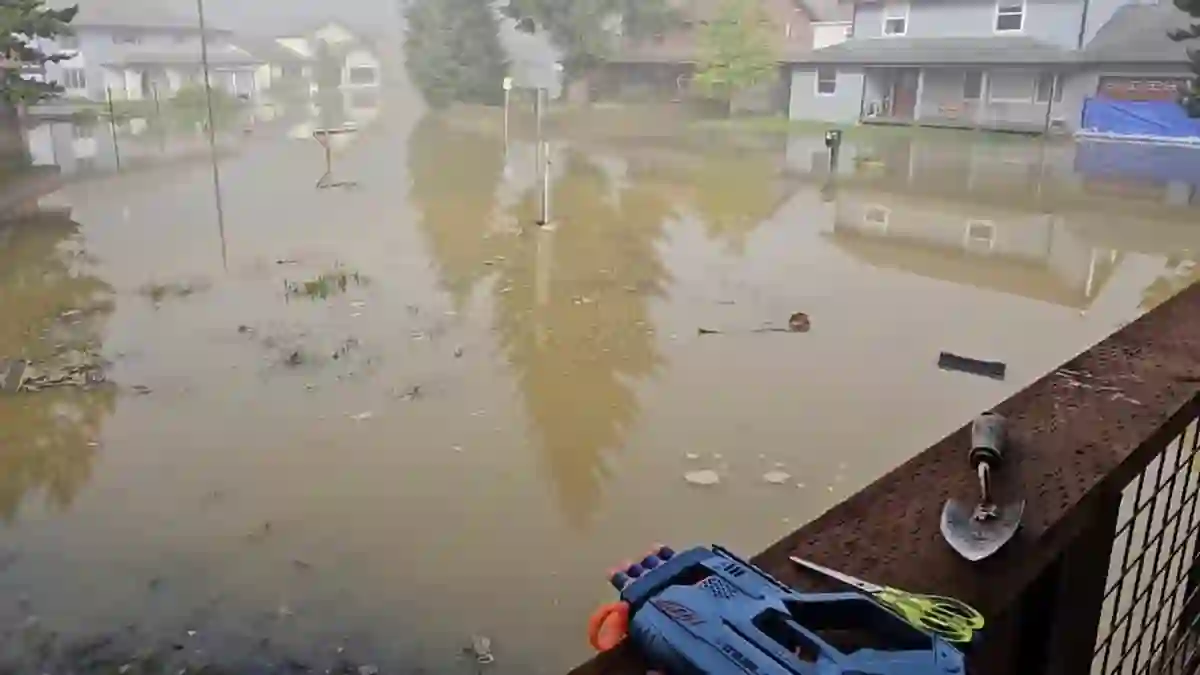Alaska’s capital city experienced dramatic flooding this week after an ice dam at a nearby glacier gave way, unleashing a surge of rainwater and snowmelt.
Streets and some residential yards in Juneau were quickly submerged, prompting urgent warnings for residents to stay alert and avoid unsafe areas.
Residents Urged to Stay Safe Amid Rising Waters
City officials stressed caution as water levels rose. A statement on the Juneau city website warned residents to “use extreme caution near damaged structures, stay off riverbanks, and avoid driving through standing water.”
Authorities highlighted that driving through floodwaters could create waves that damage nearby buildings, adding another layer of risk.
Flood Barriers Prove Crucial
Thanks to newly installed flood defenses, the city avoided the worst-case scenario.
The 10,000 “Hesco” barriers—reinforced sandbags lining roughly 2.5 miles of riverbank—protected more than 460 properties from severe flooding.
Juneau City Manager Katie Koester said the barriers had been vital, noting, “If it weren’t for them, we would have hundreds and hundreds of flooded homes.”
Funding and Community Efforts
The barriers were a combined effort between city officials, state and federal agencies, and local tribal authorities.
Homeowners in the flood zone were required to cover about 40 percent of the cost, roughly $6,300 each over 10 years, with some contributing more to reinforce the riverbank.
While a few residents objected, the project moved forward and proved its worth during this latest event.
Flooding Less Severe Than Previous Years
Although flooding did occur, the impact was far less catastrophic than in 2023 and 2024, when nearly 300 homes were inundated during similar glacial outburst events.
The latest floods began after water from Suicide Basin, a side basin of the Mendenhall Glacier located 10 miles upstream, burst free, overwhelming roads and infrastructure.
Evacuations and Emergency Alerts
Officials urged residents in the 17-foot inundation zone to evacuate immediately.
Roads like Mendenhall Loop Road remained closed until water levels dropped and safety inspections were completed.
Public facilities including the Mendenhall Valley Public Library and the Diamond Park Aquatic Center were shut down, and the FAA imposed temporary flight restrictions for safe aerial monitoring.
Record Water Levels Reported
The National Weather Service reported the Mendenhall River reached 16 feet early Wednesday, surpassing last year’s record of 15.99 feet.
Meteorologists warned residents to stay away from the river due to debris and dangerous currents, emphasizing that entering the water could be fatal.
Understanding Glacial Lake Outburst Floods
This destructive event is classified as a glacial lake outburst flood (GLOF), which occurs when water trapped behind glacial ice or debris is suddenly released.
Experts warn GLOFs are unpredictable and have historically caused significant damage worldwide.
Suicide Basin has experienced annual floods since 2011, with record-breaking events in 2023 and 2024.
Climate Change and Future Risks
Officials and scientists note that the increasing volume of water released from the basin may be linked to climate change.
Alaska is warming twice as fast as the rest of the U.S., causing glaciers to retreat and form unstable meltwater basins.
As temperatures rise, extreme flooding events like this week’s are expected to become more frequent, posing ongoing risks to communities downstream.
